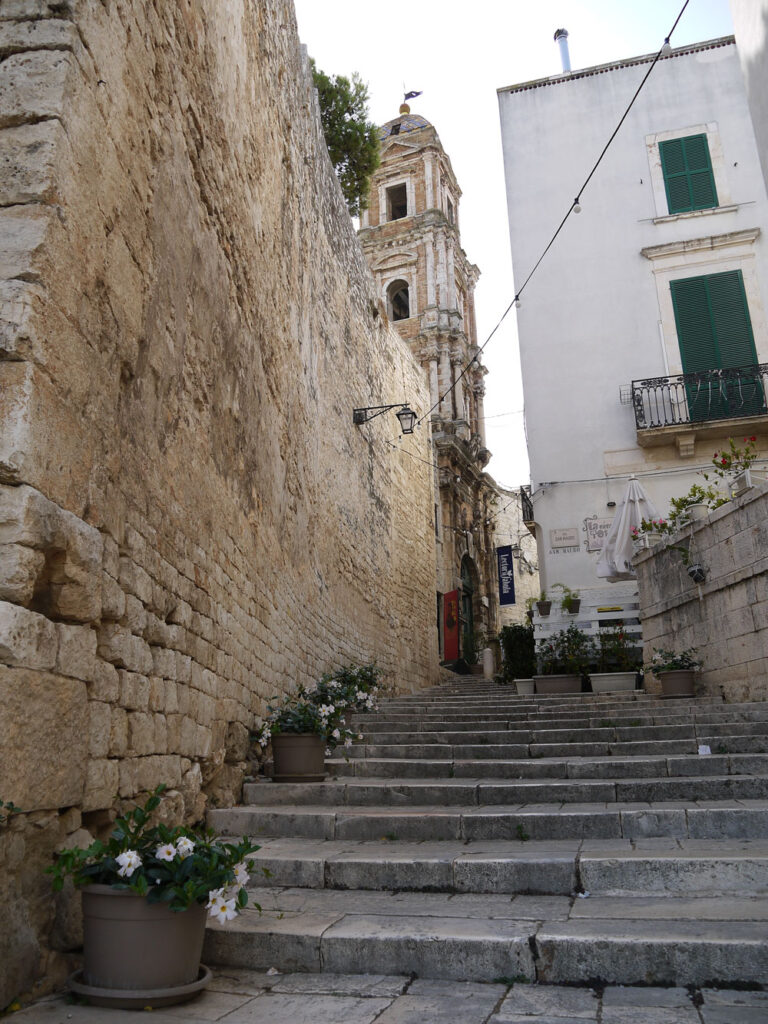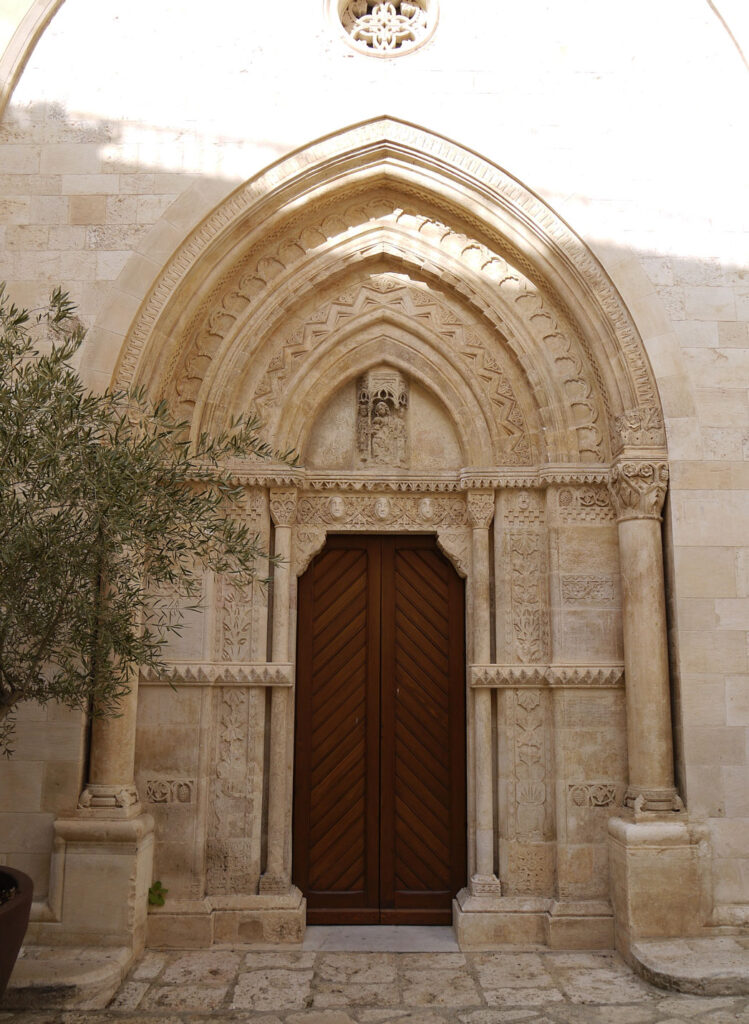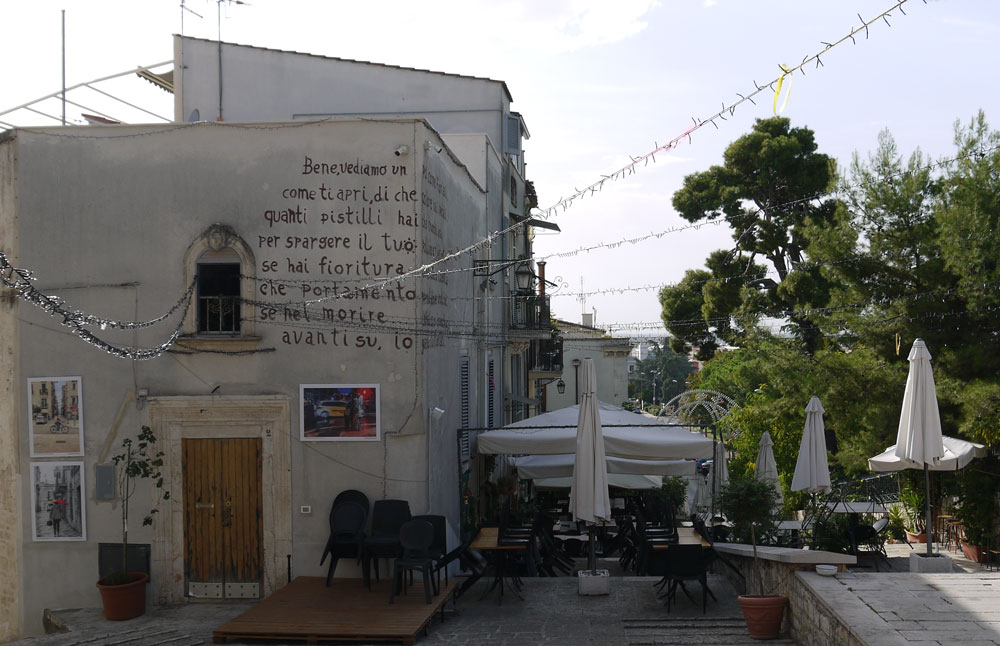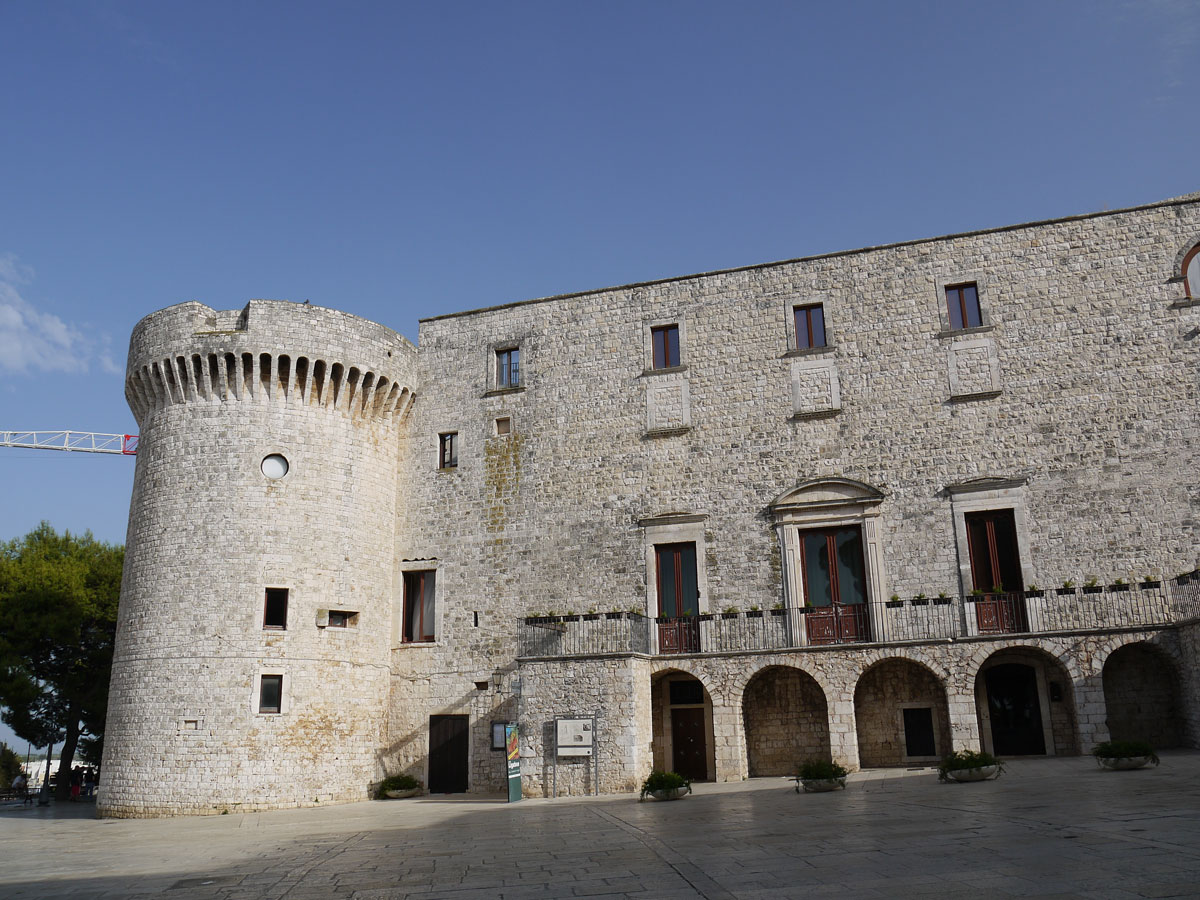Conversano is an attractive inland town in Puglia with its historic centre on a low hill alongside a fortress, the Castello Acquaviva d’Aragona (or simply Castello di Conversano). It’s a marvellous antidote to some of the more touristy destinations nearby, and hopefully even as Puglia’s popularity grows it will maintain its low-key charm.
Conversano has several small museums, and it’s the kind of place where you can feel history around you. There is a lot of history attached to the town’s castle and its owners, the Counts of Conversano; it’s worth reading up on some of the colourful (and often cruel) background if you want some added context for your visit. I’d recommend Old Puglia, a very readable, anecdote-filled account of the region’s chequered and troubled history; there’s a chapter on Conversano.
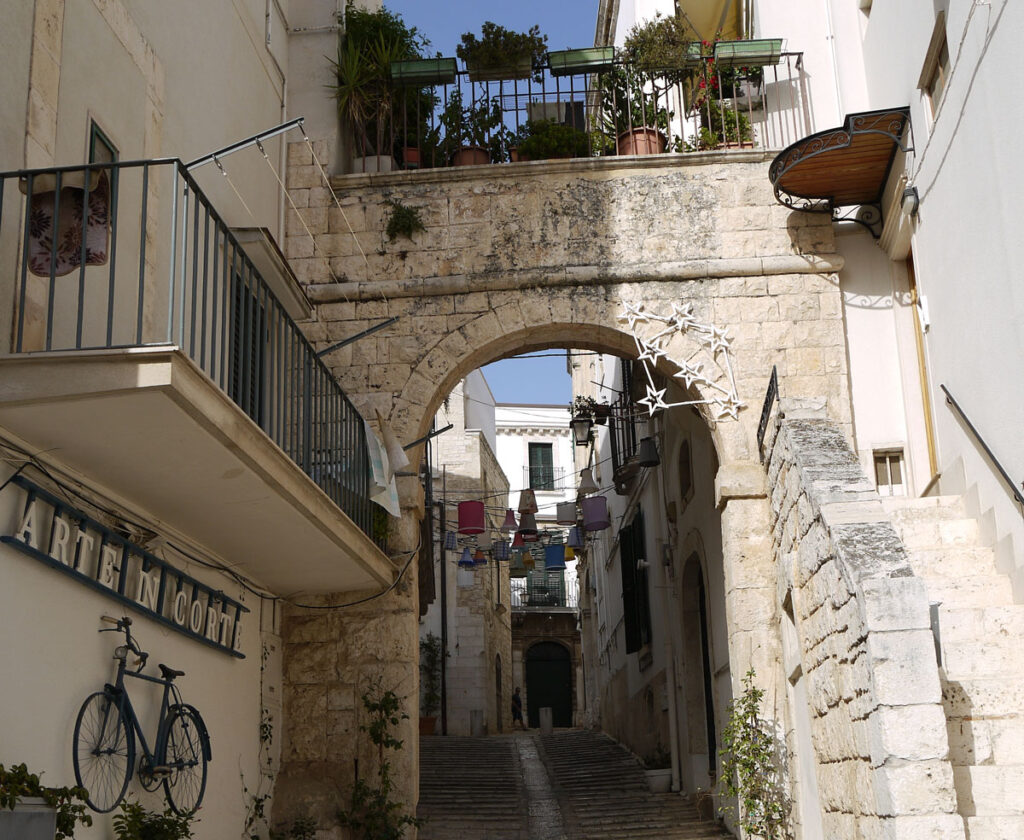
The town’s main attractions can be seen in a couple of hours, though it’s easy to spend longer. Conversano is a delightful place to wander around picturesque streets enjoying the charms of historic Puglia without the tourist crowds of more famous destinations nearby.
If you admired the gorgeous Puglia locations of the Netflix movie Jumping from High Places, Conversano is a must-visit, as many scenes were filmed here (read my guide to filming locations).
Why visit Conversano?
- Cultured, arty and historic atmosphere
- Interesting museums and sights, plus occasional exhibitions and events
- Attractive old town centre that’s a pleasure to explore
- Off the main tourist trail (at least at the time of writing), so feels unspoilt and uncrowded.
- Close to popular Polignano a Mare, but a world apart
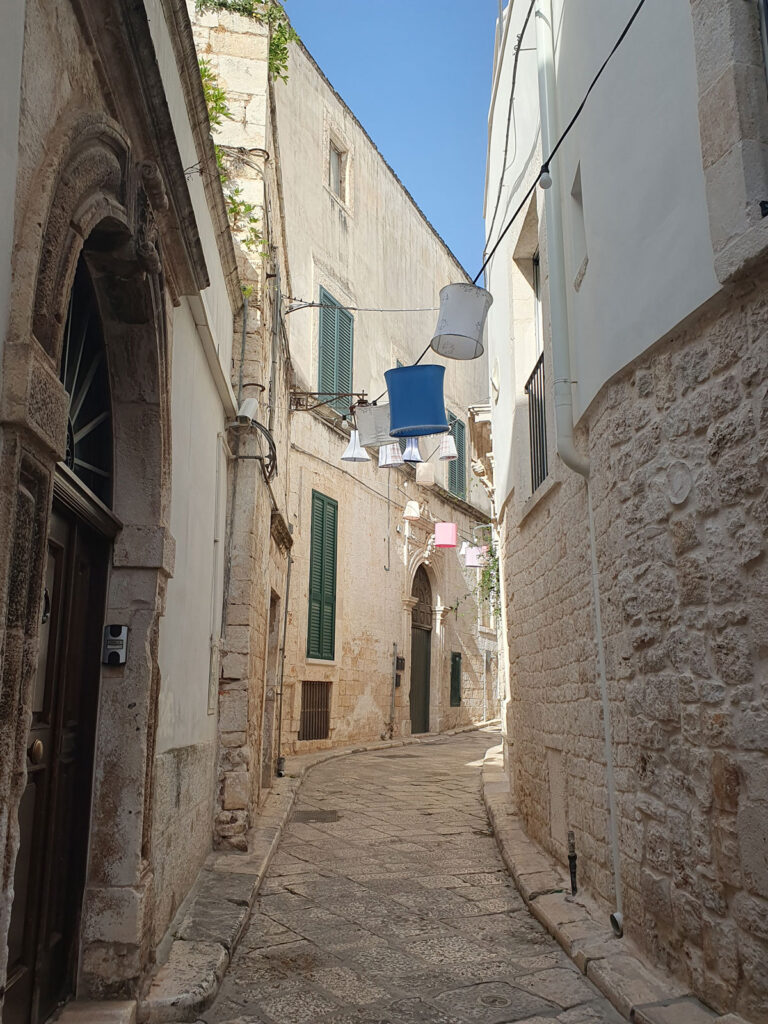
Conversano tourist information – in detail
Conversano is 20 miles south-east of Bari and just 6 miles inland from scenic seaside resort Polignano a Mare. The small town (population 26,000) is typical of historic towns in the area: a stone and white-wash historic centre where handsome buildings cluster in a maze of streets and alleys, bordered by more recent planned areas of town with neat straight streets. Beyond this is the more modern sprawl which surrounds almost all Italian towns.
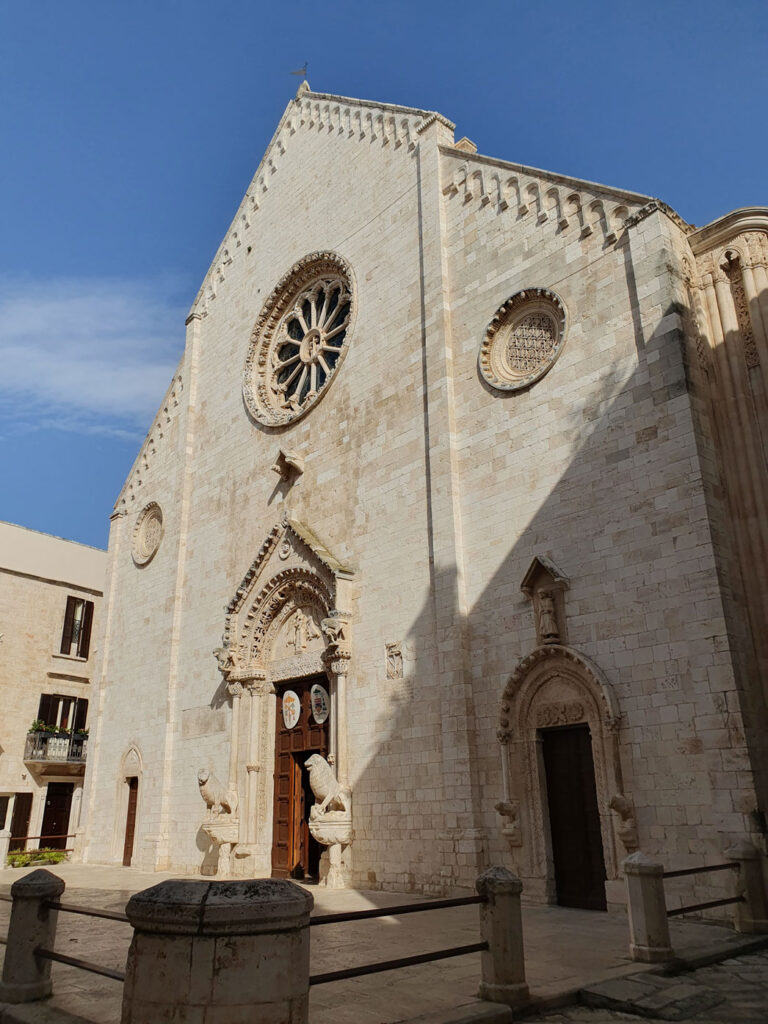
Conversano has a larger number of specific tourist attractions than some of its neighbours: a historic cathedral, the castle, an archaeological museum, an art museum, a museum of historic fashions, and an impressive former monastery, all just a few minutes’ walk apart. There are also several interesting churches and building exteriors, old town gateways, an arty ‘quarter’ and picturesque lanes to explore. Although this may sound like a lot, the museums are housed in the castle and monastery and are small. This is a very manageable, relaxed destination to explore.
The most ancient part of Conversano is the hilltop cluster which includes the town’s most important buildings: the castle, a monastery and the cathedral. This is where to begin exploring; even if the three sights are closed when you arrive, you can get your bearings and enjoy exploring the town as you wait for them to open. There are two tourist information offices at the time of writing: the Pro Loco in the castle walls in Piazza Castello, and the IAT Infopoint next to the Monastero di San Benedetto in Via San Benedetto. Both have limited opening hours, like the museums.
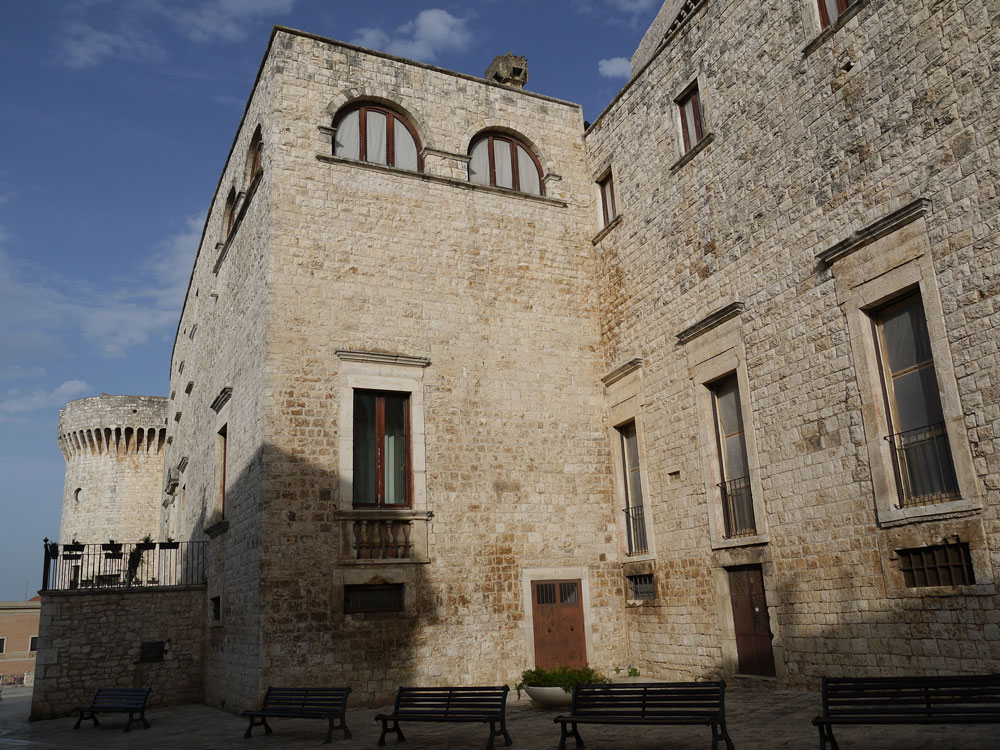
The museums of Conversano are organised into a museum system, with combined tickets: Polo Museale della Città di Conversano (MUSeCo).
The Castello Acquaviva d’Aragona is a massive edifice which has been altered many times since its 11th-century beginnings as a Norman keep constructed over much earlier megalithic walls. From imposing fortified towers and walls to the functions of a Renaissance palace, the castle was the seat of the Counts of Conversano, a feudal lordship held from the 1456-1806 by the powerful Acquaviva D’Aragona family.
The castle as a whole is not open to the public, but it belongs to the council and contains two museums and an exhibition space, so visitors can see some parts of the building complex, including a picturesque inner courtyard.
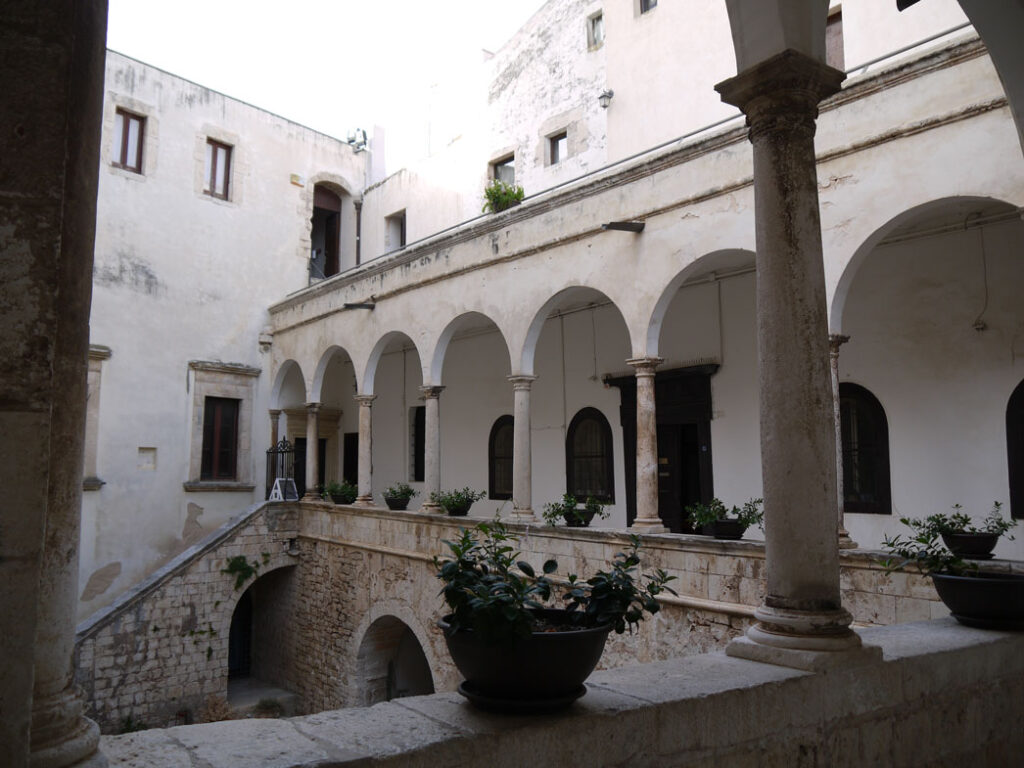
The most famous (or notorious) of the Acquaviva d’Aragona family was Count Giangirolamo II, known as ‘the Squinter’ (1600-1655). Famed for his ruthlessness (to the extent that there were rumours he’d had castle chairs covered with the flayed skins of rebellious churchmen he’d had beheaded), Giangirolamo was also a patron of the arts. He commissioned paintings and paid for the decoration of church interiors when not decapitating priests.
It was Count Giangirolamo who brought Neapolitan artist Paolo Domenico Finoglio (or Finoglia) to Conversano. This early Baroque painter spent the last years of his life in the town producing work that can still be admired here today in churches and most notably in the castle. The Pinacoteca Paolo Finoglio, in the grand reception rooms of the castle, is the home to his great cycle of ten paintings illustrating scenes from Italian epic Gerusalemme Liberata by Torquato Tasso. With stories of love, battles, sorceresses and warriors (some of them female), the gallery is an overpowering riot of storytelling and drama. While these canvases were commissioned for the castle where they are now displayed, one of the best works here was bought by the council at auction in 2016: a really fine self-portrait by Finoglio hung at the entrance to the gallery.
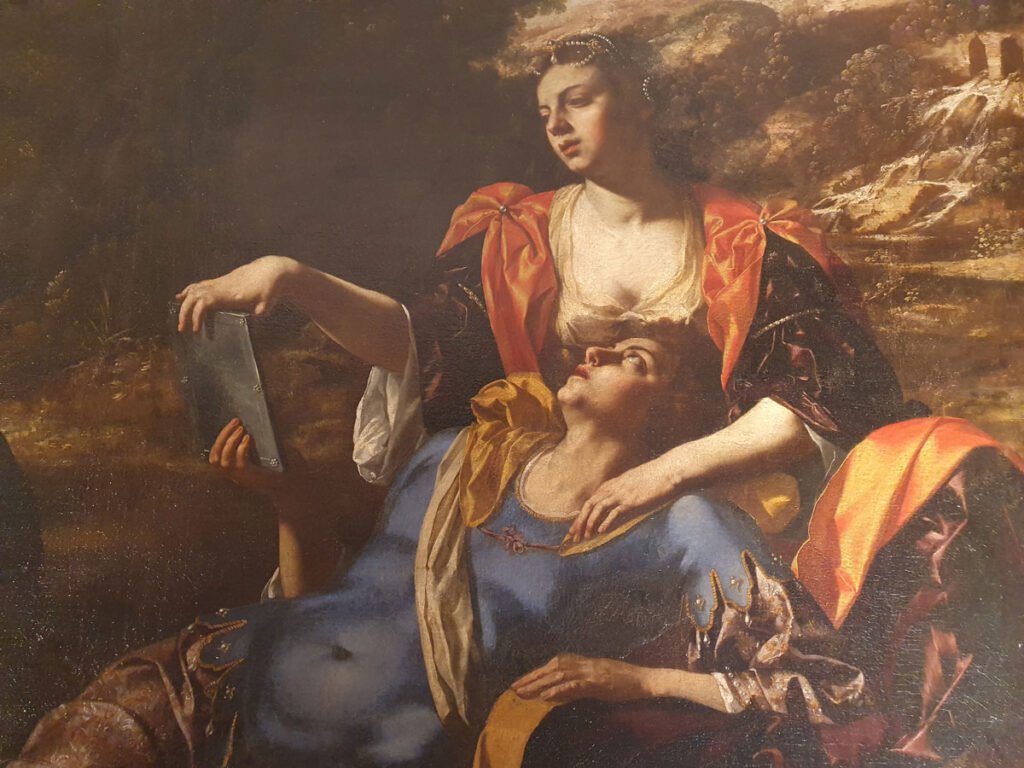
Perhaps of lesser interest, but housed on an upper floor of the castle offering a scenic access route via an internal courtyard and loggias, is the Museo del Territorio. This contains a collection of period costumes and furnishings (mostly 19th and 20th century), along with exhibits paying tribute to the history of town bands and music-makers. Alongside is the Pinacoteca Netti, another small art gallery, this one containing paintings by Pugliese painter Francesco Netti (1832-1894) and his contemporaries; some charming works. Particularly interesting is a 19th-century view of the castle itself by Alfio Tomaselli, its bare hilltop setting giving it a very different vibe to today’s scenery.
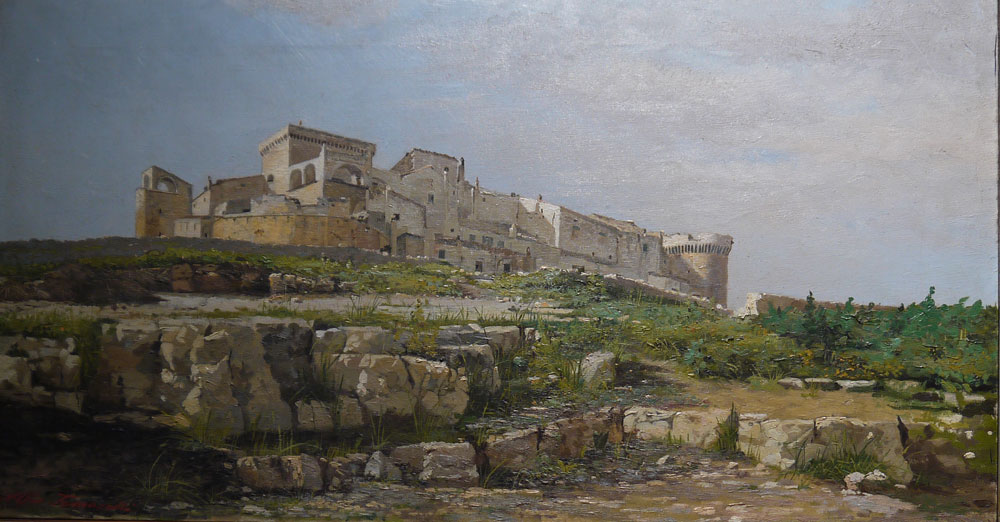
Heading clockwise around the castle will bring you to a picturesque corner by the historic Porta Tarantina, where steps climb into the old town alongside bar tables (if you’ve seen Jumping from High Places you may recognise this location). A section of the ancient megalithic wall is visible here; large rough blocks of stone forming the base of the later town defenses. There’s also a useful drinking-water tap nearby.
Taking the flight of steps upwards will bring you to the entrance to the second of the town’s big sights. The Monastero di San Benedetto started life as a Benedictine monastery, then became a convent for nuns, unusual for being entitled to male religous privileges including the right to wear a mitre. The wealthy and powerful convent was often ruled by abbesses from the Acquaviva d’Aragona family. Nowadays the buildings are used for public events and the old religious complex also houses an archaeological museum, so like the castle, visitors can see inside, subject to opening hours.
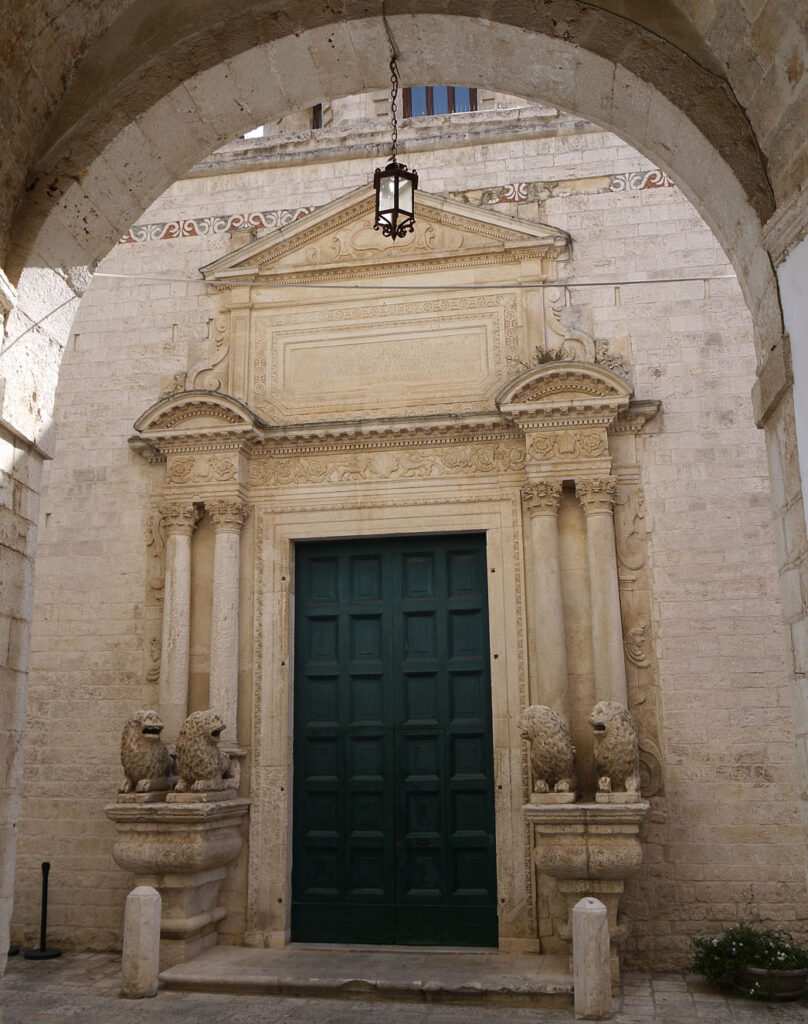
Entering though an archway, the first sight is the grand portal of the abbey church. Conversano is a town of glorious portals, as you’ll see when you explore further.
Another building which has seen many alterations, the convent includes a Baroque campanile and church interior (with paintings by Finoglio), a charming 11th-century cloister with interesting sculpted capitals and a crypt from the same era (I didn’t find this open), with Byzantine origins and fresco decorations.
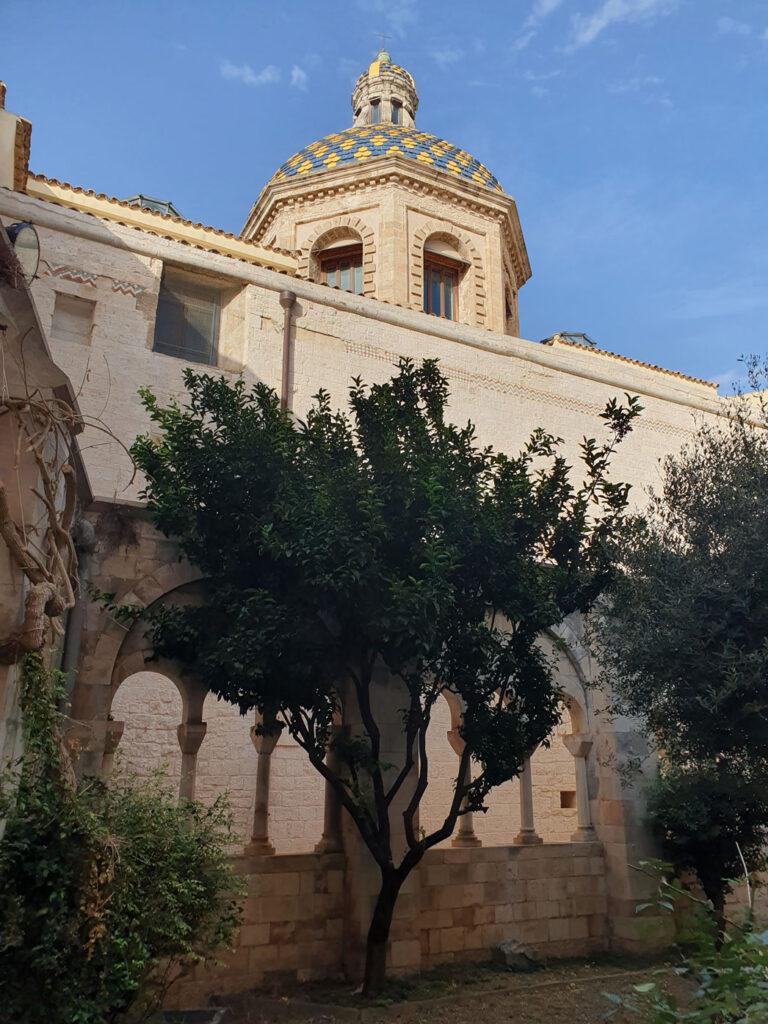
The Museo Archeologico (archaeological museum) entrance is on the right once you’ve entered the convent grounds. The collection is small but includes some interesting exhibits. Many of the items on display are finds from ancient grave sites near the town: colourful Apulian vases, a striking satyr’s-head pouring vessel, a crater on which the dead man is rendered heroic in a temple setting surrounded by weapons. Other highlights include a helmet and fragments of armour.
A curious, much later, exhibit is the ‘Door of a Hundred Eyes’ (la porta dei cento occhi). One of the Acquaviva d’Aragona abbesses created elegant quarters for herself here in 1619, including a highly-decorated chamber featuring pastoral and mythological scenes. This painted wooden door shows the giant Argo: Argus Panoptes, All-seeing Argus, said by Ovid to have 100 eyes.
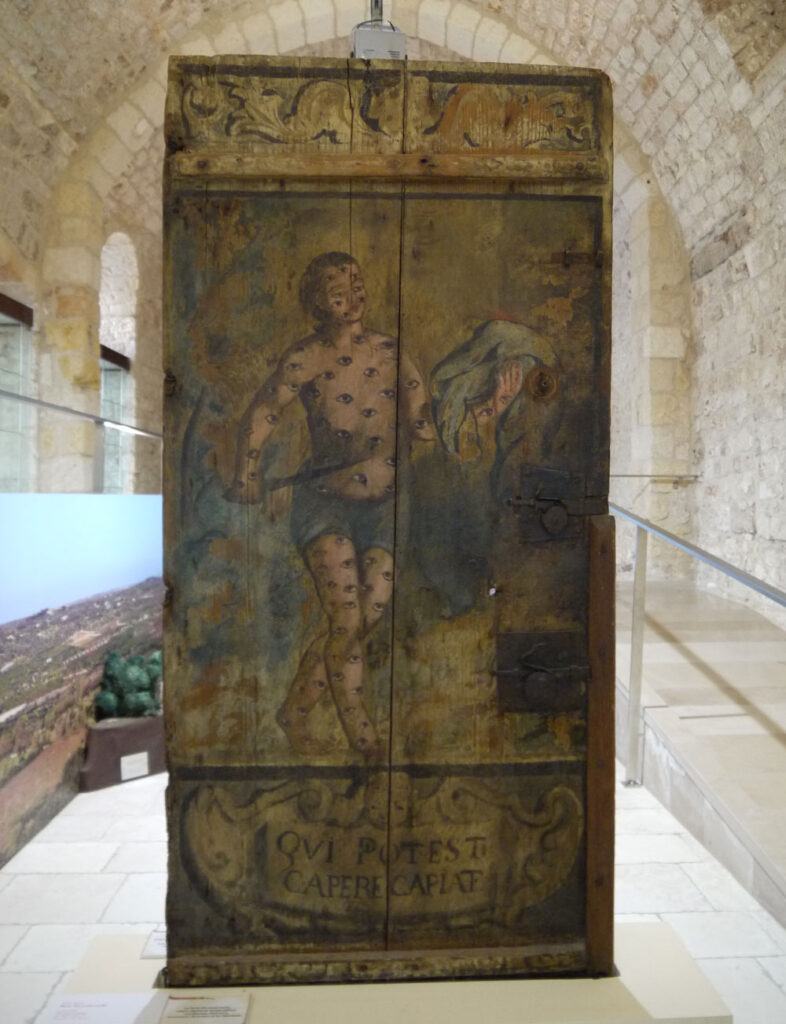
Was the door a reminder of the all-seeing power of God? Or of the Abbess? One story claims that the door was used to intimidate and spy on recalcitrant young nuns (not always here from choice). One of these features in the Romeo-and-Juliet tale of a reluctant young daughter of the Acquaviva counts, who ran away from the convent with a nobleman from a rival family.
The town cathedral, the Cattedrale di Santa Maria Assunta, is just up the lane from the monastery; if approaching from this direction you’ll pass two of its glorious old carved portals. Mostly built between the 11th and 14th centuries, the building has a Romanesque-Gothic façade which dominates the small square in front, with a rose window over the largest and grandest of its entrances.
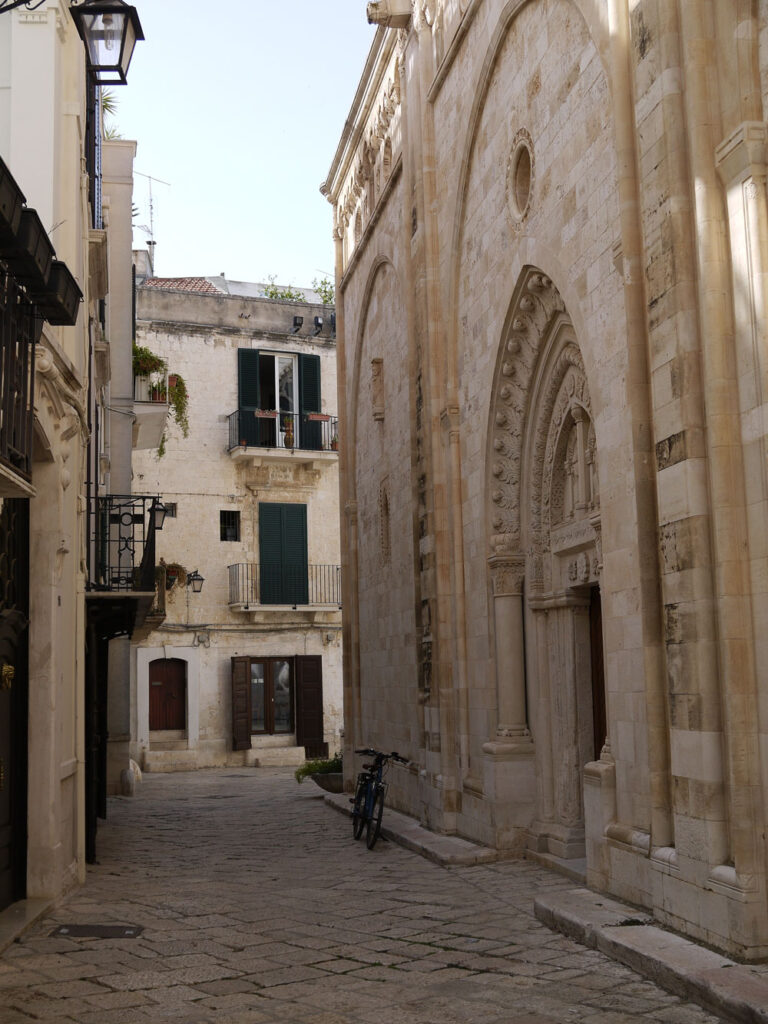
The cathedral’s interior is stately and restrained after the Baroque excess of San Benedetto, perhaps partly due to a large fire in 1911 and more recent restoration work. Above the nave, trefoil arches separate a matroneum, a gallery for female worshippers, from the main space. Highlights include damaged 13th-century frescoes and a revered Byzantine icon of the Virgin Mary, protectress of the town.
Beyond these three great sights of Conversano is a network of gorgeously picturesque lanes to explore. Lined with pale honey-coloured stone buildings, these wind across and down the slopes and emerge through the town’s ancient gateways into the level grid of streets beyond, which have their own quaint charm. As you wander, sights include arched porticoes and quaint little courtyards with external staircases.
Interesting churches include SS Cosma e Damiano, commissioned by Count Giangirolamo II, and decorated in Neapolitan Baroque style by Finoglio. On the same lane, in an arty neighbourhood of decorations and artisans, I admired prickly pear art hanging on walls and colourful lampshades swaying picturesquely in the breeze.
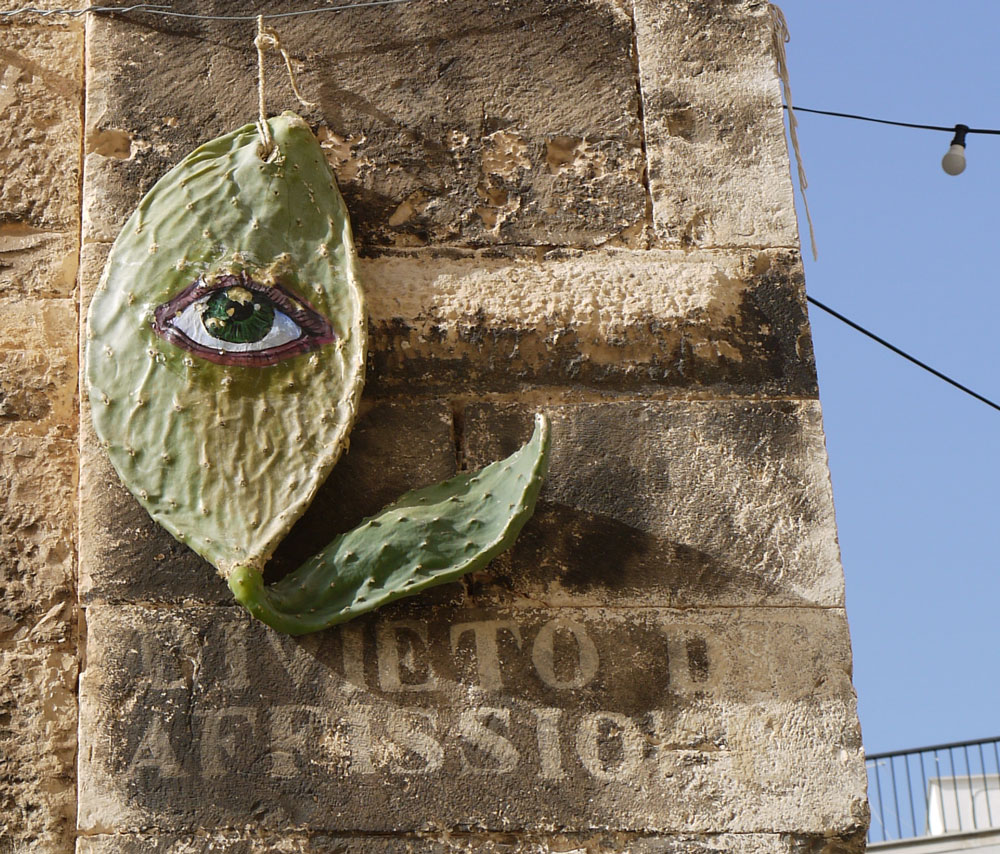
Local initiatives promoting life and culture in the historic town and its neighbourhoods include light shows as well as religious festivals, and the Vie d’Arti (Streets of Art) project encouraging local arts and crafts.
A good stop, especially on a hot day, is Conversano’s hillside park, Villa Garibaldi, with its gates facing the castle. Shady trees, public toilets, terraces, steps and monuments make this an interesting and welcome oasis alongside the historic centre.
Popular bar-restaurant Rampavilla is located on a stone staircase alongside the park. Other restaurants and bars are grouped around the castle, with more spread through the town; there’s a good choice of places to eat, drink and relax after your sightseeing. Watching the world go by is always an important part of an Italian stay, and Conversano is a great place to enjoy this pleasure.
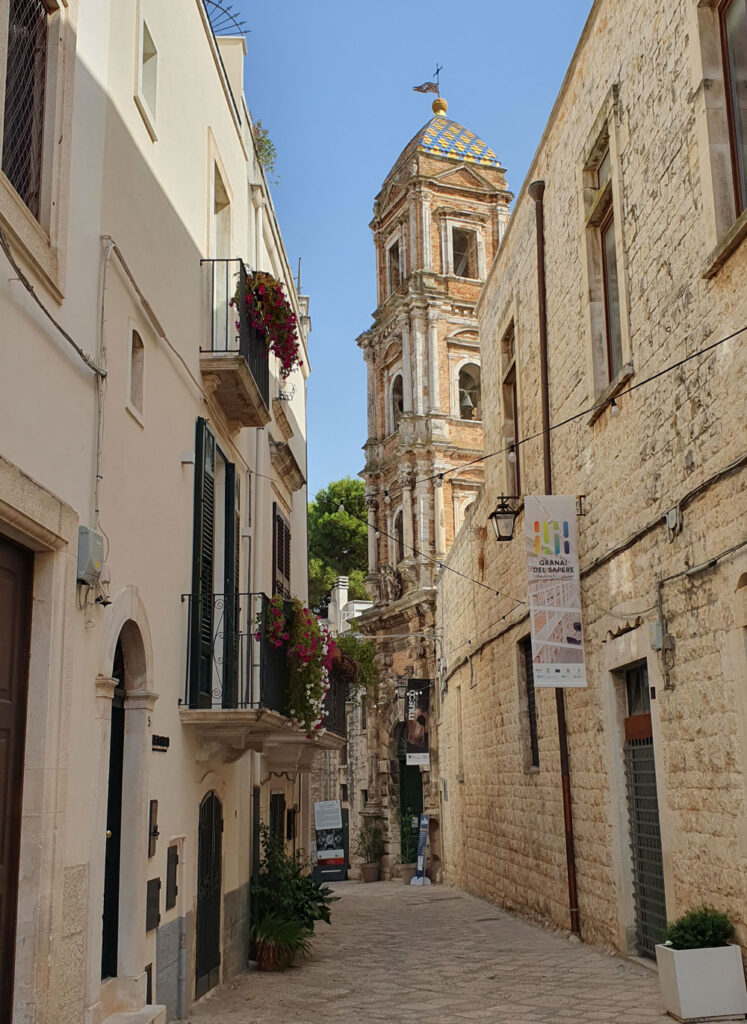
How to visit Conversano
Conversano would make an excellent base for a night or two (or longer, if you’re exploring outwards by car). I’ll suggest some places to stay below. If you’re planning a day trip and would like to see the town’s museums and churches, check opening times beforehand, as you may need to work around long lunchtime and Monday closures. You can see the best of the town in a whistle-stop tour of an hour or two, but to appreciate the atmosphere, a half or full day will give time for museums, exploring, a leisurely meal or drinks, and accommodating the vagaries of opening hours.
Conversano is only a short drive from seaside tourist honeypot Polignano a Mare, and there are irregular buses between the two towns (see below). Starting your day in Polignano before the resort’s at its busiest, perhaps fitting in a side-trip to the picturesque coastal Abbey of San Vito, then escaping the crowds for an afternoon in Conversano makes a busy but effective itinerary. This was my visiting strategy, from a base in Monopoli. I’ll admit it was tiring though, and a rush to fit in the Conversano museums between their afternoon opening time and the bus to Monopoli; I’d have loved to stay another hour or two, with an aperitivo in Conversano, but was just too tired.
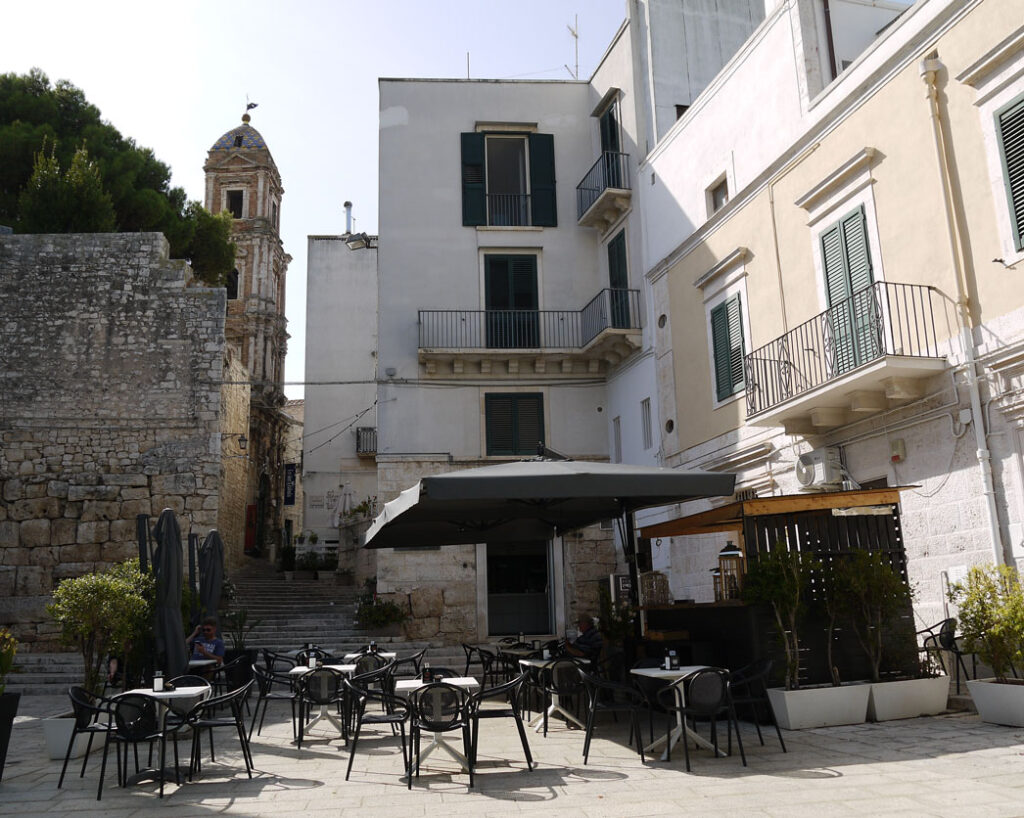
Conversano travel and public transport
Moving around Puglia can be tricky for car-free travellers, but Conversano is reasonably well-connected by the region’s standards. As is typical for Puglia, you will need to grapple with timetables – but it is worth it.
Conversano is on a Bari-Taranto railway line operated by local company Ferrovie Sud Est (FSE). This line connects Bari Centrale station with Conversano and other towns including Alberobello and Martina Franca (where travellers can change for Lecce and other destinations). The station is only a 5-minute walk from the castle and town centre. At the time of writing, however, the section of line including Conversano has been closed for several years for works, with trains replaced by rail replacement buses. Check the latest timetables: Ferrovie Sud Est.
Buses, also run by the railway company FSE, connect the town with Polignano a Mare and Monopoli, with bus stops on Viale Paolotti, just below the castle; ideal for exploring the heart of town. Timetables can be consulted on the FSE website (above) or national railway website: Trenitalia. In Polignano the bus stops centrally, just outside the old town walls. But note that stops may be limited on these services; when I caught a bus from Conversano to Monopoli, I had to alight in Monopoli quite a long way from the centre and also from the railway station.
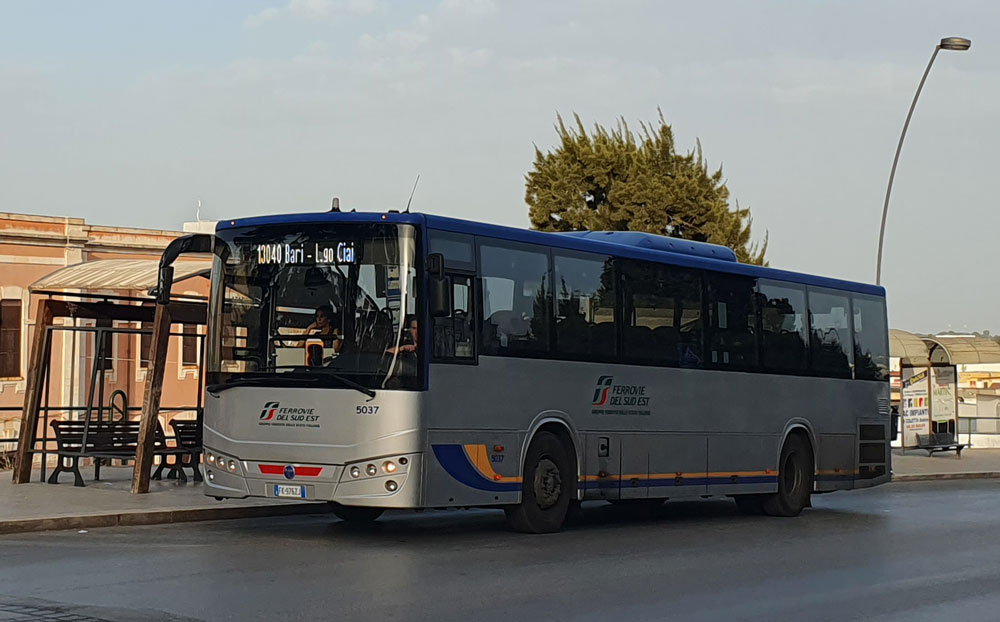
Another useful bus service for tourists is the Grotte Link, a train-plus-bus route which connects Bari with the Grotte di Castellana show caves, stopping in Conversano (tickets for this service earn you a discount on the caves admission price). The Conversano-Grotte di Castellana journey takes 20 minutes.
Bus timetables vary according to time of year, and around local needs; some function almost as school buses and frequency/timings are based around school timetables and terms. As a consequence, timetables can be hard to decipher for outsiders. I’d recommend getting up-to-date confirmation on timings, bus stops, ticket sellers etc. from local tourist information offices, which I found very well-equipped to help. In Conversano I bought my ticket at the tabaccaio in Piazza Castello.
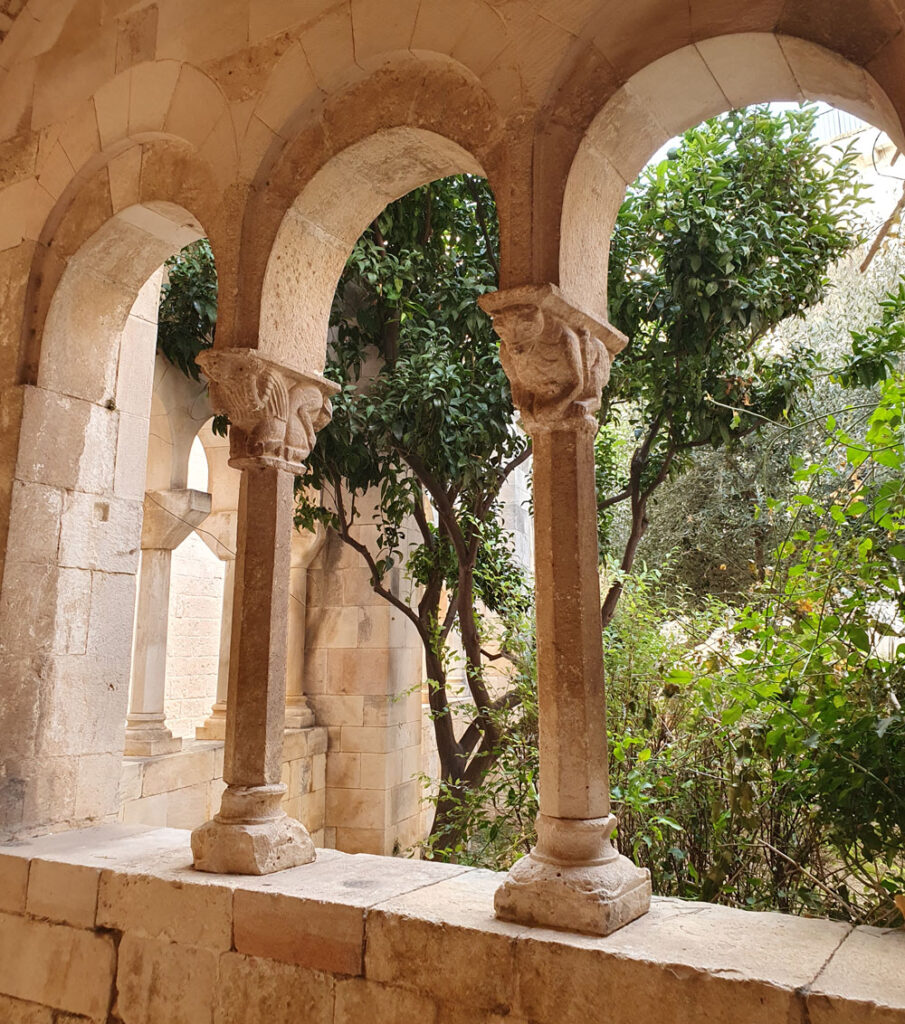
Stay in Conversano
Conversano makes a good overnight base if you’re touring the area and would like to stay somewhere more ‘real’, atmospheric and low-key than the main tourist resorts. For travellers who like to return to familiar surroundings each night, it would be a good holiday centre from which you could explore other sights and towns in this part of Puglia. Several of the town-centre options have rooms with balconies or terraces where you can sit and enjoy the views and street-life; an idyll surrounded by history.
- Find accommodation in Conversano – a full search of hotels, B&Bs, villas and apartments
- Elementa – a top-rated, welcoming and friendly B&B in Conversano
- Casa Badia Bed & Breakfast is right in the old town on Via San Benedetto; you could hardly get more atmospheric a location
- Casa mia in Puglia – family-run country-house accommodation outside town, with a pool (you’d want a car)
- Dei Balzi Dimore di Charme – central accommodationwith modern comforts in a historic building
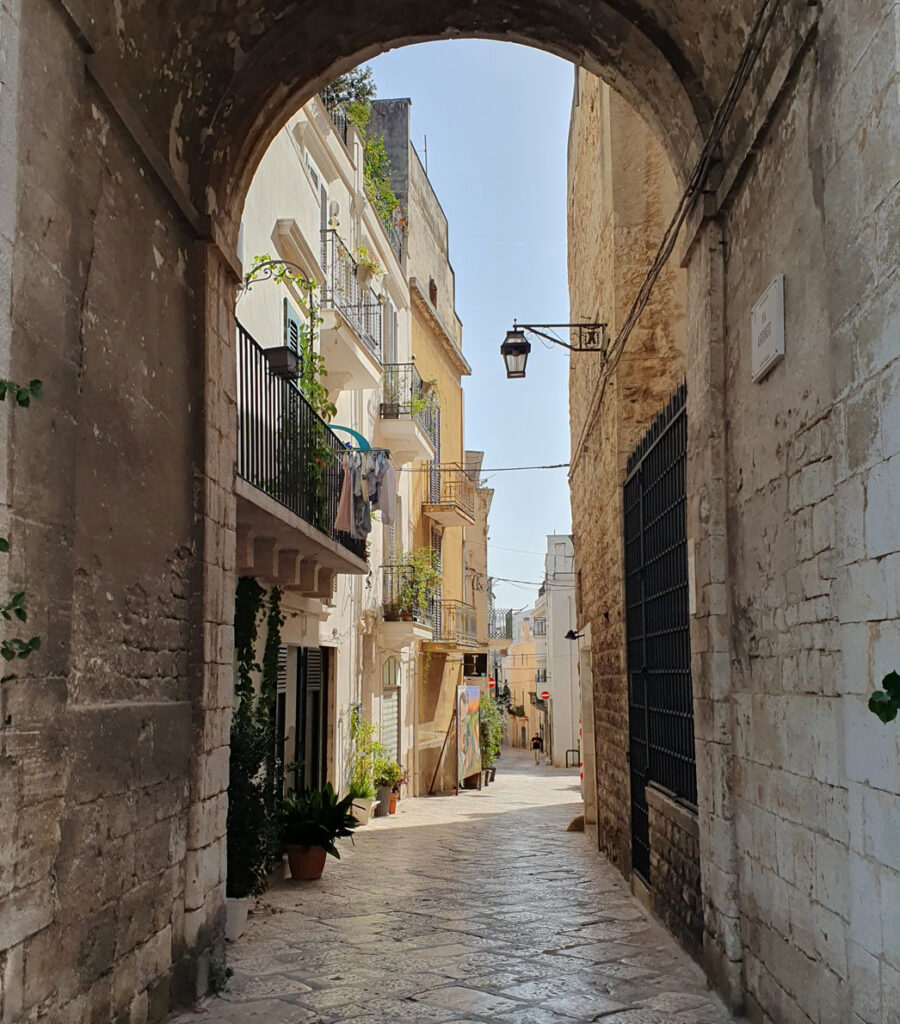
Around Conversano
Conversano is conveniently located for exploring a number of attractive destinations in this part of Puglia. Polignano a Mare and the Abbey of San Vito are a short drive away, along with a range of beach and bathing spots along the Adriatic. Bari is a city with a lot to offer as a day trip destination. Along the coast, Monopoli is an attractive excursion destination. Travelling a bit further, Puglia’s famous ‘white towns’ and trulli destinations of the Valle d’Itria are also accessible, including Martina Franca, Ostuni, Alberobello and Locorotondo. Most of these can be reached by public transport as an alternative to driving, as described above.
